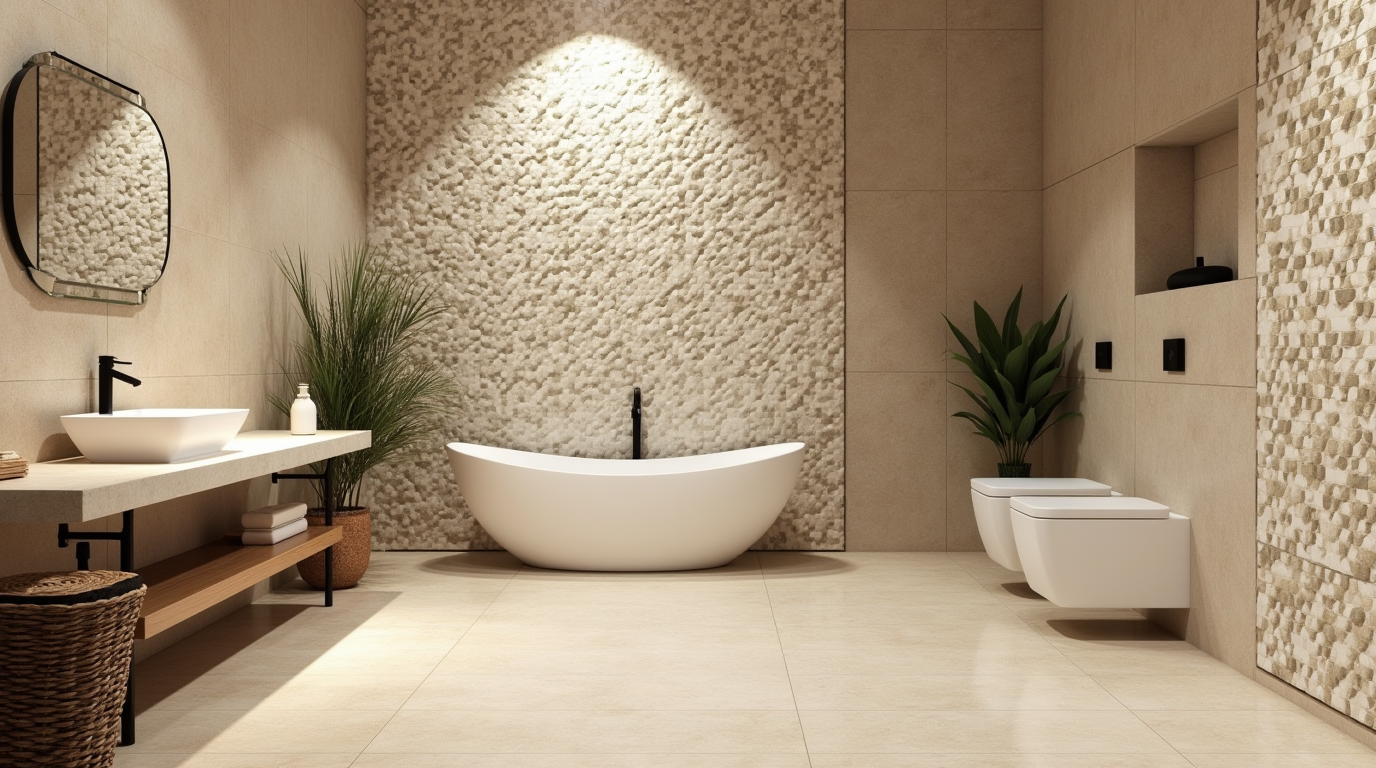Timeless Texture: How Travertine Mosaic Tiles Bring Nature into Modern Interior Design

Strong 8k brings an ultra-HD IPTV experience to your living room and your pocket.
When it comes to interior design, the materials we choose are more than just surface details—they shape the feel and functionality of our spaces. Over the years, homeowners, architects, and designers alike have moved toward natural textures and earthy aesthetics. Among the materials that have stood the test of time, travertine mosaic tiles offer a rare combination of elegance, warmth, and versatility.
Whether you’re working on a full home renovation or refreshing a single room, understanding how to use natural stone like travertine can unlock new possibilities in your design. In this article, we’ll explore what travertine mosaic tiles are, why they’re popular, how they’re used in interior spaces, and what alternatives like flexible tiles offer for more modern applications.
What Are Travertine Mosaic Tiles?
Travertine is a natural stone formed by mineral deposits around hot springs. It’s a type of limestone known for its earthy color palette and porous, slightly textured surface. Travertine is commonly found in shades of beige, tan, ivory, and rust, depending on where it’s quarried.
When cut into small, usually square pieces and arranged in repeating patterns, it becomes what we call a mosaic tile. Travertine mosaic tiles bring together the raw, organic beauty of stone with a neat, geometric layout. These tiles are often used in feature walls, bathroom floors, backsplashes, and shower surrounds.
Each piece in a mosaic is unique—some have more veining, others may contain fossil patterns or mineral streaks—which means no two installations look exactly alike. You can view a sample of such mosaic work here.
The Appeal of Travertine in Interior Design
Travertine has long been a favorite among designers due to its classic appeal. Ancient Roman buildings used travertine extensively, and even today, the stone conveys a sense of timeless luxury. Here are a few reasons why designers continue to favor travertine mosaic tiles in modern settings:
- Natural Beauty: The unique color variations and organic imperfections create visual interest without being overwhelming.
- Texture: The subtle surface texture of travertine adds depth, especially in spaces where light plays across surfaces.
- Warmth: Unlike polished marble, travertine offers a soft, warm aesthetic that feels inviting.
- Durability: With proper sealing, travertine mosaics are long-lasting and suitable for both dry and wet environments.
Popular Uses of Travertine Mosaic Tiles
The versatility of travertine makes it ideal for a wide range of interior applications. Here’s how it’s commonly used:
1. Bathroom Floors and Shower Walls
Travertine’s non-slip surface—especially in a tumbled or honed finish—makes it a smart choice for wet areas. In bathrooms, travertine mosaic tiles offer both practicality and a spa-like ambiance. Their neutral color blends seamlessly with both wood and metal finishes.
2. Kitchen Backsplashes
For kitchens, a travertine mosaic backsplash brings character to what can otherwise be a sterile environment. It works well with granite or quartz countertops and creates a beautiful contrast with modern cabinetry.
3. Living Room Accent Walls
Instead of wallpaper or painted murals, consider using travertine mosaics for a statement wall. The tiles give a space texture and natural dimension while keeping the color scheme grounded and neutral.
4. Fireplaces and Entryways
Travertine mosaic is also excellent for fireplaces, offering a classic yet rustic look that enhances any hearth. In entryways, it provides a strong first impression while holding up to foot traffic.
5. Outdoor Spaces
While not exclusive to interiors, travertine mosaics can be used on patios, around pools, or as garden borders. Their porous texture stays cool underfoot and blends beautifully with greenery and outdoor furniture.
Design Styles That Embrace Travertine Mosaic
Travertine may sound old-world, but its adaptability allows it to complement a variety of design aesthetics:
- Modern Rustic: Pair travertine with reclaimed wood, matte black fixtures, and natural fabrics like linen and wool.
- Mediterranean: Combine mosaic travertine tiles with wrought iron details, colorful pottery, and warm stucco finishes.
- Contemporary Minimalism: Use light-toned travertine to add texture to otherwise clean, minimalist interiors without disrupting the color palette.
- Scandinavian: Let the stone’s neutral hues support pale woods, white walls, and lots of natural light.
Alternatives to Travertine: Why Flexible Tiles Are Gaining Ground
Although travertine mosaic tiles are stunning, they’re not always the most practical option. In areas where stone might be too heavy, expensive, or complex to install, many designers are turning to alternatives like flexible tiles.
Flexible tiles are made from lightweight composite materials that replicate the look of stone, brick, or concrete. These thin tiles can bend around curves and be applied to non-traditional surfaces such as columns, ceilings, or temporary structures. They're also faster to install, often requiring only adhesive and basic tools.
So, while travertine remains the gold standard for natural beauty and elegance, flexible tiles provide modern solutions for design limitations.
Maintenance Tips for Travertine Mosaic Tiles
To keep travertine looking its best, regular maintenance is essential. Here are some quick tips:
- Seal the stone: Travertine is porous, so sealing it every 1-2 years helps prevent staining and moisture damage.
- Use pH-neutral cleaners: Avoid acidic products like vinegar or lemon, which can etch the stone.
- Clean spills quickly: Blot—don’t wipe—spills to avoid spreading moisture into the stone.
- Dust and sweep regularly: This helps avoid scratches and maintains the natural texture.
Where to See and Buy Travertine Mosaic Tiles
If you're considering travertine for your next project, it's a good idea to see samples before committing. This helps you evaluate texture, color variation, and how the tile will fit with your overall design scheme.
You can explore one high-quality travertine mosaic tile option here. The product shows clear examples of natural coloration, layout style, and potential uses.
Conclusion
Travertine mosaic tiles bring a grounded, earthy sophistication to interiors that few materials can match. Their timeless appearance, natural texture, and wide-ranging applications make them a smart choice for designers who want to create serene, elegant, and enduring spaces.
For those who need flexible or lightweight alternatives, materials like flexible tiles offer exciting options that combine visual impact with practical ease.
Ultimately, your choice of surface material should align with both your aesthetic goals and functional needs. Whether you embrace the lasting charm of travertine mosaic tiles or explore new-age materials, you're laying the foundation for a space that tells a story—one texture at a time.
Note: IndiBlogHub features both user-submitted and editorial content. We do not verify third-party contributions. Read our Disclaimer and Privacy Policyfor details.


